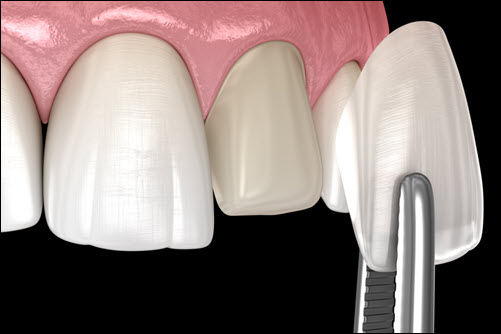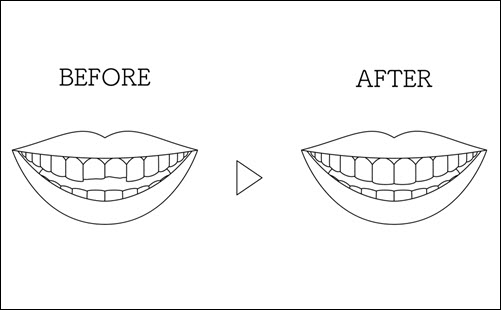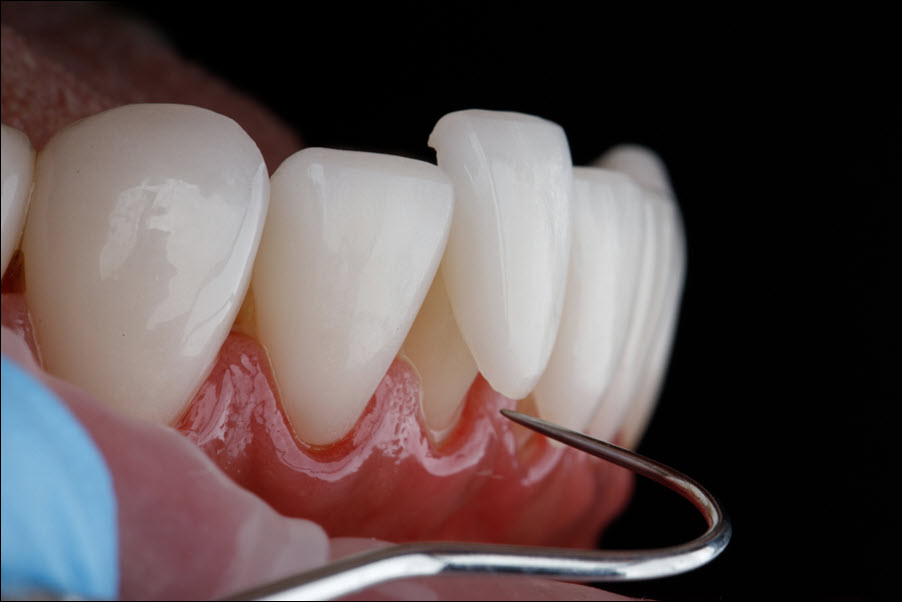Dental veneers and bonding improve smile strength and appearance. Veneers cover stains, chips, and uneven tooth surfaces. Bonding repairs cracks and gaps, restoring tooth strength and shape. Both treatments increase tooth durability and improve smile balance. Veneers create a smooth, consistent surface, improving tooth color and alignment. Bonding strengthens enamel and reduces sensitivity. Professional care increases treatment success and smile confidence. Understanding the difference between veneers and bonding helps you choose the best option. Let’s explore how veneers and bonding improve smile strength and appearance.
What Are Dental Veneers?
 Dental veneers cover tooth imperfections with thin porcelain shells. Dentists bond veneers to the front of teeth for a natural look. Veneers fix stains, chips, and minor alignment issues. Custom veneers match your natural tooth color and shape. The process involves removing a thin layer of enamel for proper fit. Dentists use a special adhesive to bond veneers securely. Veneers resist stains and last between 10 to 15 years. Professional monitoring ensures proper alignment and surface integrity. Veneers increase tooth strength and improve bite comfort. Professional care maintains veneer color and surface smoothness. Veneers improve both smile symmetry and overall appearance. Stronger veneers increase long-term smile durability and strength.
Dental veneers cover tooth imperfections with thin porcelain shells. Dentists bond veneers to the front of teeth for a natural look. Veneers fix stains, chips, and minor alignment issues. Custom veneers match your natural tooth color and shape. The process involves removing a thin layer of enamel for proper fit. Dentists use a special adhesive to bond veneers securely. Veneers resist stains and last between 10 to 15 years. Professional monitoring ensures proper alignment and surface integrity. Veneers increase tooth strength and improve bite comfort. Professional care maintains veneer color and surface smoothness. Veneers improve both smile symmetry and overall appearance. Stronger veneers increase long-term smile durability and strength.
Benefits of Dental Veneers
Veneers create a smooth, balanced smile. They improve tooth color, shape, and alignment. Veneers resist staining from coffee, wine, and smoking. Professional care increases veneer lifespan and surface durability. Custom veneers match natural tooth color for a consistent look. Stronger veneers increase chewing comfort and bite strength. Professional adjustments improve veneer alignment and gumline balance. Veneers protect enamel from future stains and surface damage. Proper brushing and flossing maintain veneer strength and color. Professional polishing increases surface smoothness and brightness. Stronger veneers improve bite comfort and surface durability. Veneers increase overall smile strength and appearance.
What Is Dental Bonding?
 Dental bonding repairs small chips, cracks, and gaps. Dentists apply a tooth-colored resin to the damaged area. The resin bonds to enamel and hardens under a curing light. Bonding restores tooth shape and surface strength. Professional shaping ensures proper alignment and bite comfort. The process takes about 30 to 60 minutes per tooth. Bonding increases enamel strength and surface durability. Professional care improves bonding strength and color consistency. Bonding blends with natural teeth for a seamless look. Proper care increases bonding lifespan and surface protection. Bonding strengthens enamel and increases chewing comfort. Stronger bonds improve overall tooth appearance and function.
Dental bonding repairs small chips, cracks, and gaps. Dentists apply a tooth-colored resin to the damaged area. The resin bonds to enamel and hardens under a curing light. Bonding restores tooth shape and surface strength. Professional shaping ensures proper alignment and bite comfort. The process takes about 30 to 60 minutes per tooth. Bonding increases enamel strength and surface durability. Professional care improves bonding strength and color consistency. Bonding blends with natural teeth for a seamless look. Proper care increases bonding lifespan and surface protection. Bonding strengthens enamel and increases chewing comfort. Stronger bonds improve overall tooth appearance and function.
Benefits of Dental Bonding
Bonding strengthens enamel and restores tooth surface integrity. It repairs minor chips and cracks quickly. Bonding improves surface strength and bite alignment. Professional care increases bonding strength and surface consistency. Bonding resists staining but requires proper care for long-term results. Professional polishing increases bonding smoothness and surface durability. Bonding increases tooth color consistency and appearance. Stronger enamel increases chewing comfort and bite strength. Bonding reduces sensitivity and improves tooth durability. Professional monitoring ensures proper bonding fit and color consistency. Bonding increases smile strength and surface protection. Professional adjustments improve bonding strength and surface balance.
Veneers vs. Bonding: Key Differences
Veneers cover the front surface of teeth, while bonding repairs specific areas. Dental veneers resist stains better and last longer. Bonding provides quicker results and requires less enamel removal. Veneers cost more but offer longer-lasting results. Bonding fixes minor chips and cracks, while veneers improve overall tooth appearance. Professional care increases both veneer and bonding durability. Veneers require two visits, while bonding takes one visit. Stronger veneers increase smile consistency and balance. Bonding improves surface strength and tooth alignment. Professional monitoring improves both treatment success and durability. Veneers and bonding increase smile strength and personal confidence.
When to Choose Veneers
Dental veneers work best for improving tooth color, shape, and alignment. They fix deep stains and surface imperfections. Veneers create a balanced, consistent smile appearance. Professional care increases veneer strength and surface durability. Stronger veneers increase chewing efficiency and bite comfort. Dentists recommend veneers for long-term smile enhancement. Veneers improve facial symmetry and smile consistency. Professional adjustments increase veneer strength and bite balance. Stronger enamel increases plaque resistance and chewing comfort. Proper care increases veneer lifespan and color consistency. Veneers improve both smile strength and overall dental health. A balanced smile increases personal and social confidence.
When to Choose Bonding
Bonding works best for minor chips, cracks, and gaps. It strengthens enamel and improves tooth surface consistency. Bonding repairs small imperfections quickly and effectively. Professional care increases bonding strength and color consistency. Stronger bonds improve bite strength and chewing comfort. Dentists recommend bonding for quick and affordable smile improvements. Bonding resists stains but requires regular care for long-term results. Professional polishing increases surface smoothness and bite comfort. Bonding increases tooth strength and surface protection. Proper care improves bonding durability and color balance. Stronger bonding increases chewing comfort and smile consistency. Bonding improves both surface strength and smile confidence.
Caring for Veneers and Bonding
Proper care increases veneer and bonding lifespan. Brush twice daily with fluoride toothpaste to strengthen enamel. Floss daily to remove plaque and food particles. Avoid biting hard objects, which can weaken veneers and bonding. Professional cleanings remove plaque and improve surface smoothness. Dentists recommend using a soft-bristled toothbrush for gentle cleaning. Professional monitoring ensures proper veneer and bonding fit. Early repairs prevent damage and increase surface durability. Stronger enamel increases resistance to plaque and acid erosion. Regular dental checkups increase veneer and bonding strength. Professional care improves long-term smile health and appearance. Stronger veneers and bonding increase smile strength and confidence.
Boosting Confidence with a Brighter Smile
Veneers and bonding increase smile strength and appearance. Improved tooth color and alignment increase smile consistency. Stronger enamel increases chewing comfort and bite balance. Balanced tooth surfaces increase smile symmetry and facial balance. Reduced plaque buildup increases breath freshness and gum health. Professional care improves veneer and bonding durability. Stronger enamel increases plaque resistance and bite strength. Clean, smooth teeth improve overall smile appearance. Better alignment increases chewing comfort and muscle function. A balanced smile increases personal and social confidence. Professional care improves smile strength and appearance. A confident smile improves both personal and professional interactions.
Dental veneers and bonding strengthen enamel and improve smile appearance. Veneers create a smooth, consistent surface and improve alignment. Bonding repairs chips and cracks, increasing surface strength. Professional care improves veneer and bonding durability. Stronger enamel increases chewing comfort and bite strength. Professional monitoring increases long-term smile balance and consistency. Proper care increases veneer and bonding lifespan. Investing in veneers and bonding improves smile strength and personal confidence. Stronger teeth increase overall dental health and appearance. Veneers and bonding increase both smile strength and personal comfort. A balanced smile improves both social and professional confidence.

